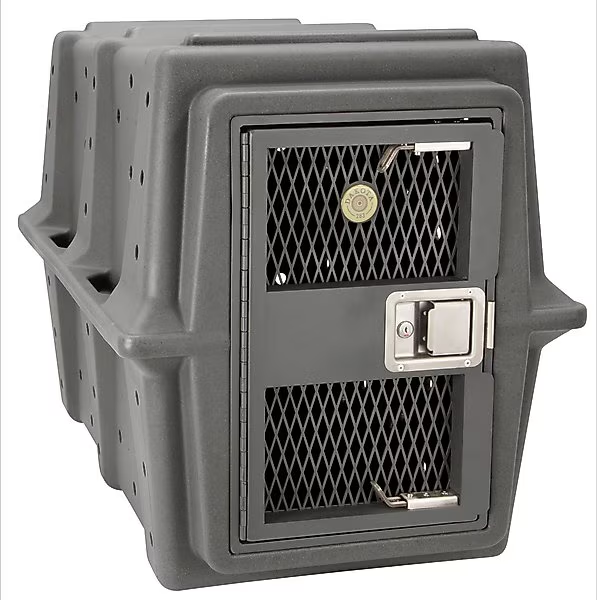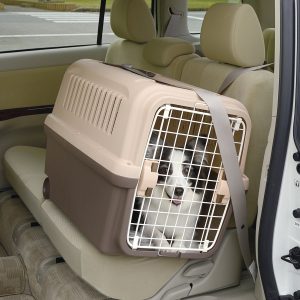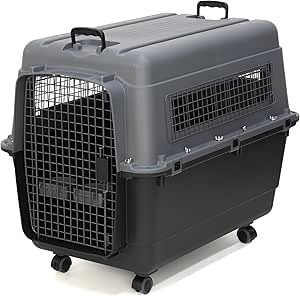Address
304 North Cardinal
St. Dorchester Center, MA 02124
Work Hours
Monday to Friday: 7AM - 7PM
Weekend: 10AM - 5PM
Address
304 North Cardinal
St. Dorchester Center, MA 02124
Work Hours
Monday to Friday: 7AM - 7PM
Weekend: 10AM - 5PM

The joy of traveling with your dog is unparalleled. Whether it’s a cross-country road trip, a weekend getaway, or a long-haul flight, bringing your furry best friend in a crate makes the adventure all the more special. But before you can hit the road or take to the skies, you need a plan for their safety and comfort. This is where reliable dog crates for travel come in—not just as a piece of luggage, but as a crucial part of a secure, stress-free journey.
This guide will go beyond the basics. While most articles simply tell you what kind of crate to buy, we’ll dive into the crucial, often-overlooked aspects of travel: preparing your dog, understanding the specific needs of different travel methods, and ensuring their well-being every step of the way.
Check out our comprehensive article on Everything You Need To Know About Dog Crates to guide your decision making on which dog crates to go for
Table of Contents
ToggleBefore you start shopping, it’s essential to understand that not all dog crates are created equal. The crate that’s perfect for a road trip may not be suitable for an airplane, and vice versa. The two primary categories of dog crates for travel are:
Car Travel Crates:

These are designed for crash safety, security, and convenience. They come in both hard-sided and soft-sided varieties, with a focus on stability within a vehicle.
Air Travel Crates:

These must meet strict, non-negotiable airline approved dog carrier regulations. They are typically hard-sided and built to withstand the unique environment of a cargo hold or cabin.
Understanding this distinction is the first step toward a successful journey.
For most road trips and everyday car rides to the park or vet, your primary concerns should be safety and comfort. A well-secured dog crate for car travel prevents your dog from becoming a distraction and protects them in the event of a sudden stop or accident.
Hard-Sided Crates for Maximum Protection
A hard-sided plastic dog crate is an excellent choice for car travel. Its rigid shell offers superior protection from impacts. Many pet owners secure these crates in the cargo area of an SUV or minivan, using tie-downs or a cargo barrier to prevent them from shifting. Look for models with plenty of ventilation and a secure, spring-latch door.
The Best Portable Dog Crates for Flexibility
If you’re looking for lightweight and versatile options, portable dog crates are a fantastic choice. These are typically soft-sided, with a sturdy wire or metal frame covered in durable fabric. They are easy to fold up and carry, making them ideal for road trips where you’ll be staying in hotels or with friends. Their lightweight design makes them easy to move from the car to a room, providing a familiar and secure “home away from home” for your pet.
Tip: When choosing a soft-sided portable dog crate, always ensure it has a sturdy frame and strong, chew-resistant mesh. It’s best for dogs who are already crate-trained and don’t have a history of chewing or anxiety.
Flying with a dog can be intimidating, but with the right preparation, it can be a smooth process. The most critical component is the crate itself, as it must adhere to strict
What Airlines Require
For in-cabin travel with small dogs, a soft-sided carrier that fits under the seat in front of you is required. The carrier must be well-ventilated and secure. For larger dogs who must travel in the cargo hold, a rigid, hard-sided kennel is the only option. Airlines will reject any crate that does not meet their specific standards.
Key Crate Requirements for Air Travel:
Hardware: All hardware, like bolts and screws, must be metal. The airline will not accept crates held together by plastic clips or fasteners, as they can break.
Crate Size: The dog must be able to stand up, turn around, and lie down naturally inside the crate.
Ventilation: The crate must have ventilation on at least three sides for proper airflow.
Labeling: The crate must be clearly labeled with “Live Animal,” your contact information, and directional arrows indicating the top of the crate.
Crucial, Up-to-Date Recommendation: Always check your specific airline’s pet travel policy on their official website before booking your flight. Regulations can change frequently and can vary between domestic and international routes. Do not rely solely on general guides; the most accurate information will come directly from your chosen airline.
While choosing the right crate is essential, it’s only half the battle. A successful journey depends on your dog’s comfort with the crate and the act of travel itself. This is a step many guides overlook, but it’s crucial for your dog’s well-being.
Desensitizing Your Dog to the Crate
If your dog is not already crate-trained, begin the process well in advance of your trip. The goal is to make the crate a familiar and safe space. Start with short periods, giving your dog a high-value treat or a frozen KONG toy every time they enter. As they grow more comfortable, gradually increase the time they spend in the crate. This positive association will be invaluable when it’s time to travel.
Making the Crate Part of the Journey
Once your dog is comfortable in the crate, start associating the crate with movement. Place the crate in your car without your dog in it and take it for a short drive. The next step is to put your dog in the crate and take a short drive around the block, slowly increasing the duration. For air travel, place the travel carrier in a busy, noisy room of your house to help them get used to the sounds they might experience at an airport.
Beyond the Crate: Essential Travel Gear
To ensure your dog’s trip is as comfortable as possible, a few extra items can make all the difference.
A Familiar Bed: Place a blanket or bed from home in the crate. The familiar scent will provide a sense of security.
Travel Bowls: Collapsible silicone bowls are perfect for food and water on the go.
Hydration: For long car trips, consider a no-spill travel water bottle that attaches to the crate door.
Identification: A collar with an ID tag and an up-to-date microchip are non-negotiable. For air travel, it’s a good idea to tape a printed copy of your contact information to the top of the crate.
Conclusion
Traveling with your dog should be an enjoyable and safe experience for everyone. By taking the time to understand the differences between car and air travel crates, choosing the right equipment, and preparing your dog mentally for the journey, you can transform a potentially stressful situation into a seamless adventure. Remember, the right dog crates for travel isn’t just a container; it’s a home on the go that gives your dog a feeling of security and comfort, no matter where your travels take you.
By understanding your dog’s natural denning instincts and following a patient, positive training approach, you can transform what some might see as a cage into a place of security and comfort. So, as you prepare for your next adventure or simply seek peace of mind in your home, remember that the right choice of dog crates kennels boxes can make all the difference, providing a safe and secure space for the dog you love.